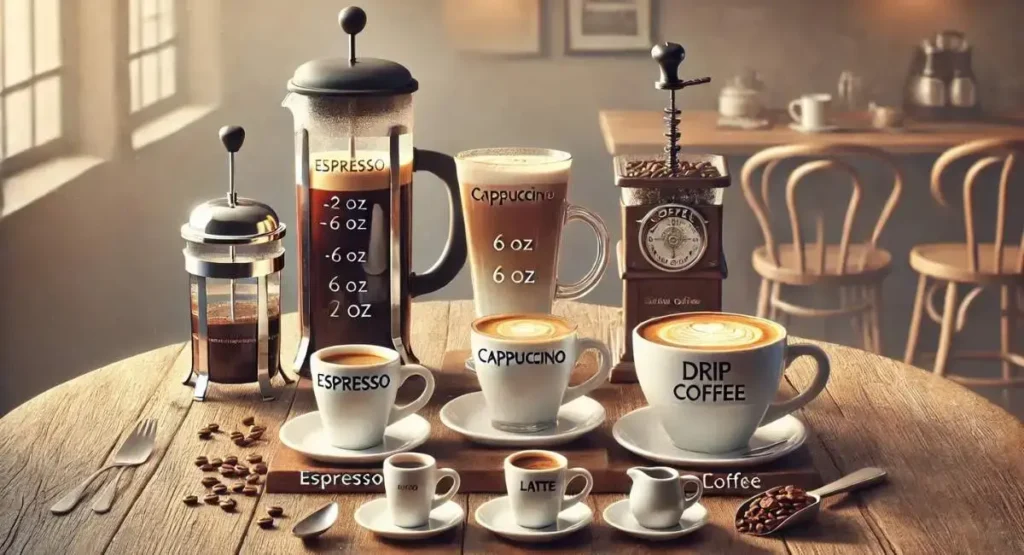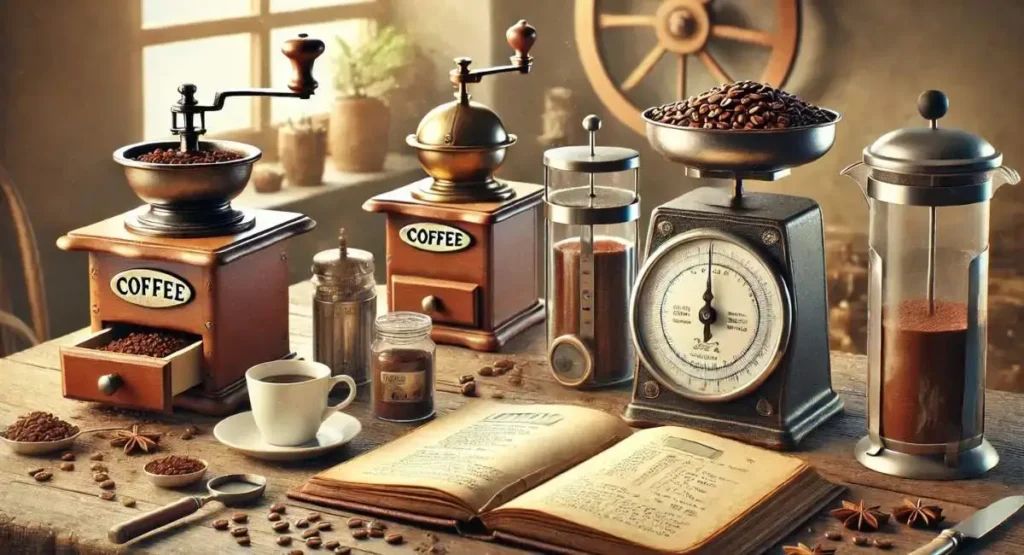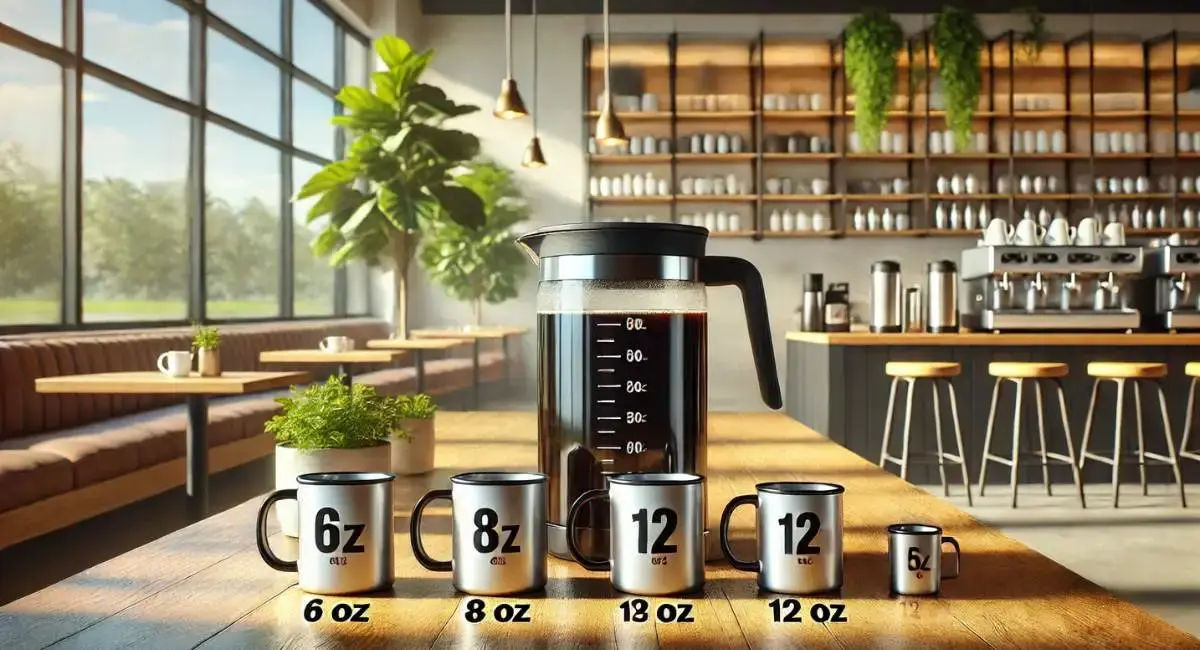When preparing coffee for a huge gathering or while organizing an event, it’s crucial to know how to figure out the right amount to prepare. This small step can make a big difference in keeping your guests happy. Understanding how many cups are in a gallon is not just a practical skill—it helps you serve the ideal amount while ensuring consistent flavor and strength.
Whether you rely on a tried-and-true recipe or enjoy experimenting, getting the basics right is essential for crafting a great coffee experience. This understanding allows you to plan better and ensure every guest feels taken care of.
As you read this article, you’ll not only find the answer to your questions but also explore key topics and finer details that will help you gain a greater grasp of brewing the perfect cup. Whether you’re hosting a large gathering or catering an event, having a copious supply of coffee and knowing the right conversion is essential.
This comprehensive guide offers the tools you need to master the process, from measuring the correct number of cups to meeting your brewing needs. By exploring this knowledge, you can save time and provide a seamless coffee service for any occasion, ensuring every filled cup satisfies even unexpected guests.
Understanding Gallons and Measurement Basics
Understanding measurements is crucial when it comes to coffee brewing or even cooking in general. Knowing the relationship between gallons and cups is fundamental for achieving the best results. Whether you’re a barista aiming for precision in every brew or a home brewer looking to scale up your favorite recipe, grasping these basic units can make a significant difference in both taste and satisfaction.
Coffee Volume Facts!
Definition of a Gallon
The US liquid gallon is a standard unit of volume measurement commonly used for liquids in the United States. It is defined as 231 cubic inches, which equals exactly 3.785411784 liters. A gallon consists of four quarts, with each quart divided into two pints.
Furthermore, each US pint contains 16 US fluid ounces, making the US fluid ounce equivalent to 1/128 of a US gallon. Understanding this breakdown is key to mastering precise measurements for any purpose, including coffee brewing.
How Many Cups of Coffee in a Gallon?
A gallon of coffee contains 16 cups when using standard 8-ounce cups, or 21 cups when using traditional 6-ounce coffee cups. Since there are 128 fluid ounces in a gallon, the number of cups depends on your cup size: 16 cups (8 oz each) or 21 cups (6 oz each).
Imperial Gallon vs. Metric Gallon

Imperial measurement, the system of units used in the US, is based on ounces, cups, and gallons, while the metric measurement system, widely used in other parts of the world, relies on milliliters and liters. For liquid measurement, a simple conversion shows that an imperial gallon is equivalent to 4.546 metric liters. Understanding these differences is crucial when brewing coffee, especially when recipes call for precise measurements.
Dry Gallon vs. Liquid Gallon
Imperial measurement goes beyond liquid volume and includes the concept of a dry gallon. A single imperial gallon is equivalent to 18.6 US cups or approximately 4.40 metric liters. Understanding this distinction is vital for precise coffee brewing, especially when working with different measurement systems.
Calculating the Number of Cups of Coffee in a Gallon
Calculating the number of cups of coffee in a gallon begins with a simple formula: Gallons × 16. Since 1 gallon equals 16 cups, this calculation works perfectly for standard measures. However, the term “cup” can be ambiguous, especially when it comes to brewing coffee.
The Specialty Coffee Association of America (SCAA) defines a cup as 6 ounces of water before brewing, which produces less coffee when brewed. According to the golden ratio, you’ll need a specific amount of coffee grounds for each serving.
Many coffee machine manufacturers define a cup differently, depending on the coffee-to-water ratio, the specific machine, and personal preferences. Understanding these measurements, choosing the right preparation method, and ensuring precision in servings will help you achieve the perfect alignment for any coffee brewing task.
| Measurement Type | Volume Per Cup | Total Cups Per Gallon |
| Standard Gallon | 16 cups | 1 gallon |
| SCAA Cup | 6 ounces | ~21 cups |
| Coffee Machine Cup | 5 ounces | ~26 cups |
| Larger Serving (8 oz Cup) | 8 ounces | ~16 cups |
| Larger Serving (10 oz Cup) | 10 ounces | ~12.8 cups |
The Basic Calculation Formula
There are 128 ounces in a gallon. To calculate how many 8-ounce cups are in a gallon, you can use the following formula:
Formula:
Number of cups = Total ounces ÷ Size of cup
By applying this formula:
128 ounces ÷ 8 ounces per cup = 16 cups
This means there are exactly 16 eight-ounce cups in a gallon.
Variability in Measurements
Calculations for how many cups of coffee are in a gallon can vary based on specific cup sizes and individual preferences for coffee strength. For example, adding milk, sugar, or other additives to your coffee can change the actual serving size, leading to different amounts per gallon.
Adjustments might also be needed depending on the coffee grounds you use and your chosen brewing ratio. These approximations highlight the importance of being flexible when determining servings.
Understanding how many cups are in a gallon of coffee is invaluable when planning and brewing for large groups. Using the standard coffee cup size of 6 fluid ounces, you can expect approximately 21 cups in a gallon.
However, it’s crucial to consider your actual cup size and make adjustments as necessary. Always plan ahead, account for variables, and think about the preferences of your coffee-drinking audience to ensure you prepare the perfect amount of coffee for any occasion.
Factors That May Influence the Result
The serving size of a coffee can vary based on several factors, whether you’re brewing at home, ordering at a café, or planning for a large event. By understanding these influences, you can customize your coffee experience to achieve perfection.
Additionally, accounting for spillage, evaporation, and personal preferences can help you determine the right quantity for your specific situation. It’s always wise to have extra coffee available to avoid running out during an event or gathering.
When batch brewing a gallon of coffee, you should also consider its freshness and flavor. The taste and quality of hot brewed coffee can decline after about 30 minutes to 1 hour, depending on storage conditions and the type of coffee used. Following a general guideline for freshness ensures your coffee stays enjoyable for all.
You May Also Like
- Does Baja Blast Have Caffeine? Uncover the Truth (2025)

- Does Sweet Tea Really Contain Caffeine? Get the Facts

- Does Cacao Have Caffeine? Shocking Insights Revealed!

Standard Cup Sizes and Conversions
In the United States, the standard size for a paper coffee cup is 8 fluid ounces (236.6 ml), which is the most common size for takeaway coffee. However, coffee cup sizes can vary depending on the type of drink. For example, espresso cups are typically 2-3 oz (59-89 ml) demitasse cups.
while cappuccino cups range between 6-8 oz (177-237 ml). Latte cups are larger, usually around 10-12 oz (296-355 ml), and regular drip coffee is often served in 8-10 oz (237-296 ml) mugs.
Many coffee shops also offer larger sizes, such as 12 oz (355 ml), 16 oz (473 ml), and even 20 oz (591 ml), for those who prefer a bigger serving. While 8 oz is the standard paper cup size, the actual cup size depends on the specific drink ordered. By providing a range of sizes, coffee shops can optimize the cup to match the beverage, ensuring the best flavor and overall customer experience.
How Many Cups in a Gallon?
In dry measurement, there are 18.62 cups in a gallon, while in liquid measurement, a gallon equals 16 cups. Understanding this distinction is essential for ensuring accuracy when brewing coffee or using precise measurements in any recipe.
How Many Cups in a Quart and a Pint?
In dry measurement, a pint contains 2.325 cups, whereas in liquid measurement, a pint equals exactly two cups. These differences are important to consider when using precise measurements for brewing coffee or preparing recipes.
Factors Affecting Coffee Serving Sizes

When it comes to brewing the perfect coffee, the serving size can vary depending on several factors. Whether you’re preparing coffee at home, ordering it at a café, or hosting a large event, it’s essential to have an understanding of what influences the ideal serving. These influences can help you customize the coffee experience to suit the occasion, ensuring every cup delivers perfection tailored to individual preferences.
Coffee Strength
One of the primary factors that impact serving sizes is the strength of the coffee. A stronger brew often requires smaller serving sizes to maintain a proper balance of flavor and intensity, ensuring a satisfying coffee experience for every drinker.
Brewing Method
Brewing methods play a significant role in determining serving sizes. For example, French press coffee often produces a larger serving because of its full immersion brewing technique, while pour-over methods offer precise control over the amount brewed per cup, making it easier to tailor servings to individual preferences.
Type of Coffee Beans
The type of coffee you brew significantly influences serving sizes. Espresso is a highly concentrated coffee with a smaller serving size compared to drip coffee. Similarly, specialty drinks like latte or cappuccino contain additional ingredients, that alter the final volume per serving, creating unique portions for each drink.
Cup Size and Shape
The physical attributes of the cup used can affect the perceived serving sizes. A larger cup may hold more liquid, but the actual amount of coffee served often varies based on the fill level. Additionally, the shape of the cup can influence the aroma and flavor perception, enhancing or altering the coffee experience.
Personal Preferences in Coffee Servings
Personal taste preferences have a significant role in determining serving sizes. Some coffee lovers enjoy a stronger, more intense brew, while others prefer a lighter and milder flavor. This variability in preference directly impacts the amount of coffee served per cup, making it an important factor to consider.
Cultural Norms Around Coffee Serving Sizes
Cultural practices and regional preferences significantly impact serving sizes. In some cultures, smaller, stronger servings are preferred to highlight the bold flavors of the coffee. Conversely, other cultures may prefer larger servings, designed for savoring the experience over a longer period.
Tips and Tricks for Measuring Coffee Accurately
Precise measurements are essential to achieving a consistently flavorful and satisfying cup of coffee. Whether you’re a novice brewer or a seasoned barista, following these tips will help you master the skill of measuring coffee and achieving the perfect brew every time.
Use a Kitchen Scale for Precision
Invest in a kitchen scale for precise measurements. Weighing your coffee beans or grounds helps ensure accuracy, especially when using different coffee-to-water ratios for various brewing methods.
Understand the Coffee-to-Water Ratio
Find out the perfect ratio of coffee to water for your preferred brewing technique. A standard ratio like 1:16 (1 part coffee to 16 parts water) works well for drip coffee, but it can vary depending on taste preferences and the coffee strength you desire.
Measure by Volume if Necessary
While weight is more accurate, measuring by volume with a standard measuring cup is also effective. For a stronger brew, use a 1:8 ratio, or adjust the measurements to suit your taste.
Importance of Grind Size
Adjust the grind size of your coffee to suit the specific brewing method you are using for the best results. Finer grinds are ideal for pour-over or espresso techniques, while coarser grinds are better suited for cold brew or French press. Maintaining a consistent grind size ensures even extraction and enhances the flavor of your coffee.
Always Use Freshly Ground Coffee
For the purest taste, crush your bean of coffee right before brewing. This step retains the aromatic oils and flavors that significantly enhance your coffee experience.
Regularly Calibrate Your Equipment
Regularly fine-tune your coffee grinder and measuring equipment to ensure accuracy and precision. Always check against a trusted reference to ensure consistent results with every brew.
Track Brew Times for Consistency
Consistency is the cornerstone of mastering the art of brewing coffee perfectly every time. Stick to the same measurements and techniques each time to replicate your favorite brews. Additionally, time your brews to ensure uniformity. Different brewing methods require specific brew times to achieve optimal extraction and enhance flavor development.
Unique Considerations in Coffee Gallon Conversions
When converting gallons to cups of coffee, it’s essential to consider unique factors that may influence the results. These considerations go beyond simple math and account for cultural, historical, and practical variations that can affect how coffee is measured and prepared. Understanding these factors ensures more precise brewing and allows for better customization based on specific needs.
Regional Variations in Gallon Use
The concept of a gallon isn’t universal and can vary depending on where you are in the world. In the United States, a gallon is defined as 128 fluid ounces, which makes calculating the number of cups straightforward. However, in the United Kingdom, an imperial gallon equals 160 fluid ounces, leading to a different result when converting to cups of coffee.
This regional variation can significantly affect your brewing calculations, especially if you’re following an international recipe or catering for people from different regions. Always consider these differences when preparing large quantities of coffee.
Historical Context of Coffee Measurements

The history of coffee measurements reveals how cultural and technological shifts have influenced how we calculate and prepare coffee. In earlier times, coffee was often measured using approximate methods, like scoops or handfuls, rather than precise tools.
The introduction of standardized units like the gallon brought more consistency, particularly in professional settings. Over time, methods evolved to include exact ratios, such as the golden ratio of coffee-to-water, ensuring optimal flavor and extraction. Understanding this historical context allows us to appreciate how modern coffee brewing has been shaped by centuries of innovation and adaptation.
Conclusion
The question of how many cups of coffee are in a gallon might seem like simple math, but it carries significant implications for both everyday brewing and professional catering. By mastering these measurements, coffee enthusiasts and professionals can ensure that every cup is perfectly brewed to meet expectations and achieve perfection.
FAQs
How much does 1 gallon of coffee serve?
One gallon of coffee normally gives around 10 mugs. In the morning, about 60% of a group will likely drink at least one mug, whether it’s regular, decaf, or tea, while some may choose nothing. By the afternoon, this percentage often drops to around 40%, reflecting varying preferences throughout the day.
How much is 4 scoops of coffee?
For a good strong brew using 6-ounce cups, I’d suggest starting with around 4 scoops of coffee – that’s roughly 8 tablespoons – for every 4 cups of water.
What is the perfect coffee ratio?
The coffee-to-water ratio can be adjusted based on taste preference, but the sweet spot for most people falls between 1:15 and 1:18. To brew a satisfying pot of coffee, a good starting point is a 1:16 ratio, meaning you’d use 1 gram of coffee for every 16 milliliters of water. From there, feel free to fine-tune it based on your personal taste preferences.
Why is it important to measure coffee accurately?
Using a coffee scale to precisely measure both coffee and water by weight ensures better flavor, consistency, and efficiency. It also encourages experimentation to find your perfect cup. For coffee enthusiasts, a scale is an essential tool that can help elevate your home brewing experience to a professional level.
What is the recommended amount of coffee to drink per day?
4-5 cups of coffee per day are considered to provide the greatest health benefits. However, individual sensitivity to caffeine must be considered. The recommended amount of coffee can vary depending on factors like age, existing health conditions, and personal preferences.
How much ground coffee is needed for a gallon?
For a strong, standard brew, you’ll generally need about 1 cup (8 liquid ounces) of ground coffee for a gallon of water. Some prefer a bit less for a milder taste, or a bit more if they like it extra strong.
How many people does a gallon of coffee serve?
A gallon of coffee typically serves about 16 people, assuming standard 8-ounce servings. Of course, this can vary if people are having larger mugs or multiple cups.
What’s the difference between liquid and dry cup measurements?
This is an important distinction!
- Liquid cup measurements are all about volume. Think of measuring water, milk, or coffee – it’s how much space the liquid takes up. A standard US liquid cup is 8 fluid ounces.
- Dry cup measurements are about mass or weight for dry ingredients like flour, sugar, or ground coffee. Even though they’re called “cups,” the actual weight can vary greatly depending on the density of the ingredient. For example, a cup of flour and a cup of sugar have different weights. When a recipe calls for a “cup of flour,” it’s often implying a specific weight, not just how much fits into a measuring cup.




